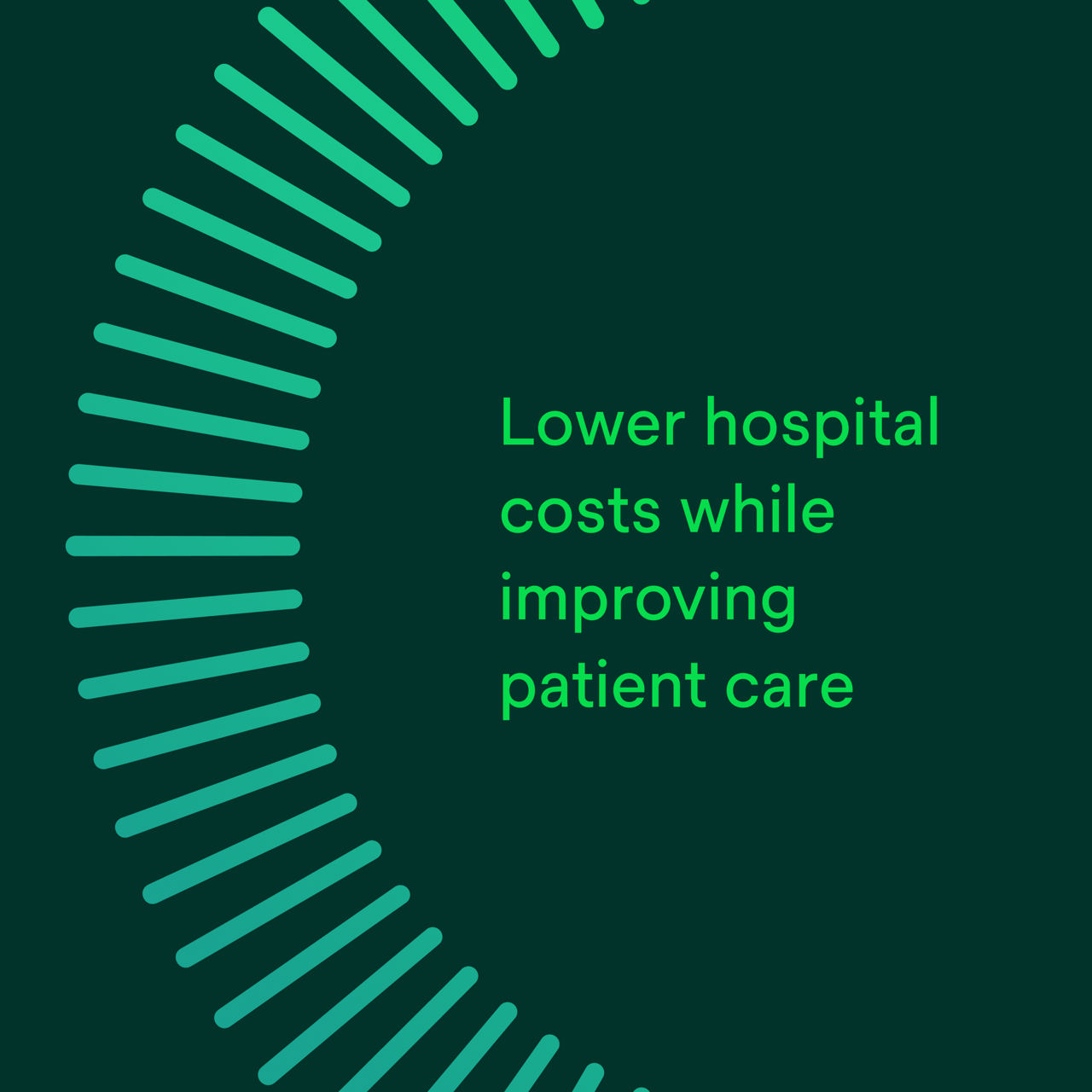3M™ Potentially Preventable Services (PPS)

Product details
All about 3M PPS Software
The 3M PPS methodology addresses high-cost ancillary services that may not provide useful information for diagnosis or treatment, and therefore have no effect on clinical management. Such services include diagnostic tests, laboratory tests, therapy services, radiology services and pharmaceuticals that may be redundant or are not reasonably necessary for providing care or treatment.
3M PPS is equally useful to employers, payers, health plans, provider organizations and researchers. Any of these entities can use standard claims data to identify the number, cost and risk-adjusted rates of specific potentially preventable services and the providers that order or provide unusually high volumes of low-value services. As with the other PFPs, risk adjustment is critical for a fair comparison of rates between institutions.
Here are a few examples of the value 3M PPS can bring to clients:
- Specifying potential overuse. For one large Medicaid managed care plan, 29 services accounted for over 75 percent of potentially preventable services. These included imaging services (CT, ultrasound, echocardiography, MRI) and lab tests (level I chemistry, levels I and II immunology, level II microbiology), as well as a variety of procedures (angioplasty, level I endoscopy of the upper airway) and drugs (classes IV and V pharmacotherapy).
- Identifying potential underuse. Although overuse of ancillary services is the typical concern in fee-for-service medicine, 3M PPS analysis also identifies potential underuse. For example, under capitation payment, some patients may not receive enough services. These situations may be revealed by comparing actual services with what would be expected for a given patient population.
- Focusing on targeted authorization or education programs. Rather than imposing burdensome authorization requirements on all providers or launching unfocused educational efforts, 3M PPS analysis focuses attention on those providers and organizations with high, risk-adjusted PPS rates. Risk adjustment using 3M CRGs takes away the “my patients are sicker” objection.
- Rewarding efficiency. Under shared savings programs, payers and providers such as accountable care organizations (ACOs) share savings from reduced overuse. Importantly, payers can give providers specific data on PPS incidence by service, diagnosis and provider – the information needed to generate savings.
3M PPS classification logic is the same for every licensee, although different organizations may use it in different ways. Each licensee determines the appropriate uses. At this time, Solventum does not offer software that replicates the PPS analysis used by specific organizations.
The 3M PPS methodology is integrated with other Solventum patient classification methodologies. For example:
3M PPS, along with 3M™ Potentially Preventable Admissions (PPA) and 3M™ Potentially Preventable Emergency Department Visits (PPV), make up the 3M™ Population-focused Preventables (PFP) Classification Methodology.
Solventum offers three Potentially Preventable Event (PPE) methodologies:
- 3M PFP methodology
- 3M™ Potentially Preventable Complications (PPC) Grouping Software
- 3M™ Potentially Preventable Readmissions (PPR) Grouping Software
All 3M PPE methodologies help measure and reduce costly, clinically significant adverse outcomes.
3M PPS is defined using the 3M™ Enhanced Ambulatory Patient Groups (EAPG) methodology, which easily aggregates results into service lines, such as laboratory or oncology.
3M CRGs adjust for differences in patient risk. In addition, Diagnostic Subgroups (a 3M CRG component) categorize the indications for potentially preventable services.
Solventum experts can advise employers, health plans, government agencies, provider organizations and other interested parties on how to obtain the maximum value from using 3M PPS. For example, Solventum consultants can help an organization measure the incidence of potentially preventable services, compare against benchmarks and design improvement programs. Solventum consultants can also help payers and other organizations measure PPSs across provider organizations and other patient populations, design pay-for-outcomes incentive methods and facilitate learning collaboratives.
The 3M PFP methodology is available in the following Solventum products:
- 3M™ Core Grouping Software (CGS)
- 3M™ Grouper Plus Content Services (GPCS)
- 3M™ Data to Action Solution
Available to licensees on the Solventum customer support website:
- PFP Methodology Overview
- PFP Definitions Manual
- PFP Setup Guide
- PFP Summary of Changes
The methodologies to assign 3M™ Potentially Preventable Services (PPS), 3M™ Potentially Preventable Admissions (PPA) and 3M™ Potentially Preventable Emergency Department Visits (PPV) are all included within the 3M™ Population-focused Preventables (PFP) Software. Although 3M PPS is identified using only ambulatory claims data (i.e., physician, clinic and hospital outpatient), comparing 3M PPS rates across different populations requires risk adjustment by individual health status as measured by 3M CRGs. 3M PFP data requirements are the same as for 3M CRGs. All required data are routinely collected from institutional and professional claims, including the UB-04 and CMS-1500 paper forms and their corresponding X12N 837 electronic formats. Pharmacy data in NCPDP format are optional but recommended. Consistent, unique patient identifiers are essential. Analysis typically involves creation of a static data set comprising at least one full year of data; some users perform rolling analyses each month or each quarter. 3M PFP software does not need to be built into claim-processing systems.
Overuse of low-value tests, services and medications costs the American health care system $75 billion to $100 billion a year, according to a 2019 review article.¹ These figures do not include the impact on the patients who receive services of marginal utility that sometimes pose significant risk. Although overuse of specific tests, services and medications is well documented, the challenge has been what to do about it. Common approaches – such as expecting patients to second-guess their physicians, blanket denial of payment, or cumbersome authorization requirements – cause their own problems. Patients may not receive services that are medically appropriate in their circumstances, and back-and-forth authorization processes add more administrative costs of the U.S. health care system.
In 2012, Solventum met this challenge by releasing the 3M™ Potentially Preventable Admission methodology as one of the three Population-focused Preventables. (The others are 3M PPS and 3M PPV).
As with all 3M PPE methodologies, three core concepts are essential. First, we recognize that not all services are potentially preventable. Second, what matters is not the individual service, but rather the overall rate of potentially preventable services. Instead of approaching quality with the mindset of “This should never happen,” we use a more realistic and meaningful approach of “This has happened too often.” Third, any comparisons across populations of patients must be risk-adjusted. In practice, that means that the actual 3M PPA experience of a population is compared with the experience that would be expected for a population with the same case mix.
Structure
3M PPS logic is divided into two phases:
1. Identify potentially preventable services
Each service provided in a physician practice, outpatient hospital department (except emergency), or similar setting is assigned to one of approximately 600 3M™ Enhanced Ambulatory Patient Groups (EAPGs). The 3M PPS methodology compares the 3M EAPG with the principal diagnosis as classified by the diagnostic subgroup (DSG) component of the 3M™ Clinical Risk Groups (CRG) methodology. There are thousands of 3M EAPG/DSG pairs that indicate potentially preventable services. Examples (as of 2020) include:
- MRI of the Back for Other Back and Spine Diagnoses (EAPG 294/DSG 937301)
- Diagnostic Lower Gastrointestinal Endoscopy for Nausea, Vomiting, Diarrhea (EAPG 136/DSG 930401)
- Occupational Therapy for Vascular Dementia (EAPG 270/DSG 900602)
- Electroencephalogram for Headache (EAPG 211/DSG 904001).
Detailed output from 3M PPS allows licensees to focus on PPS categories such as imaging, lab, endoscopy or therapy.
2. Determine patient risk adjustment
Consider the example of two physician practices that have identical rates of ordering MRIs in the early evaluation of low back pain. If one practice’s patients are baseline healthy and the other practice’s patients have multiple comorbidities, the differences in baseline health status must be considered. This is done by calculating norms by Aggregated Clinical Risk Group (ACRG) and then comparing each practice’s actual PPS experience with its expected PPS experience. The typical result is identification of individual practices with excessive rates of ordering or providing low-value ancillary services. Addressing these concerns may be as simple as showing physicians how they differ from their peers.
3M PPS can also identify underuse. For example, when physician practices are paid by capitation (a flat rate per patient regardless of utilization), patients may be underserved. Again, comparing actual experience with expected experience (after case mix adjustment) provides actionable data for improvement.
3M PPS clinical logic is maintained by a team of Solventum clinicians, data analysts, clinical analysts, programmers and economists. The methodology is updated annually to reflect changes in the standard diagnosis and procedure code sets and make enhancements to the clinical logic.
¹Shrank WH, Rogstad TL, Parekh N. Waste in the US health care system: estimated costs and potential for savings. JAMA. 2019;322(15):1501-1509.







